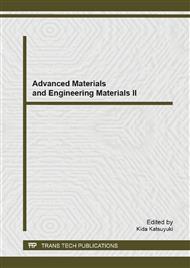p.509
p.514
p.518
p.522
p.526
p.530
p.534
p.540
p.544
Calculating of the Beating-Up Force for 3D Weaving
Abstract:
During beating-up process in plain weaving, the weft is resisted by two forces: frictional resistance between the weft and the warp, and elastic resistance from the warp. In the process of 3D weaving, several ends of warps are inserted in multiple sheds simultaneously, the resistance force of 3D weaving is much bigger than that in traditional weaving. A beating-up mechanism should work out the range of resistance, since the movement can only be realized when the beating-up force exceeds or equals the resistance. A theoretical foundation for 3D weaving mechanism is provided in this paper by calculating the resistance force in flat weaving using integral method and then deriving the resistance in 3D based on its structural characteristics.
Info:
Periodical:
Pages:
526-529
Citation:
Online since:
April 2013
Authors:
Price:
Сopyright:
© 2013 Trans Tech Publications Ltd. All Rights Reserved
Share:
Citation:


